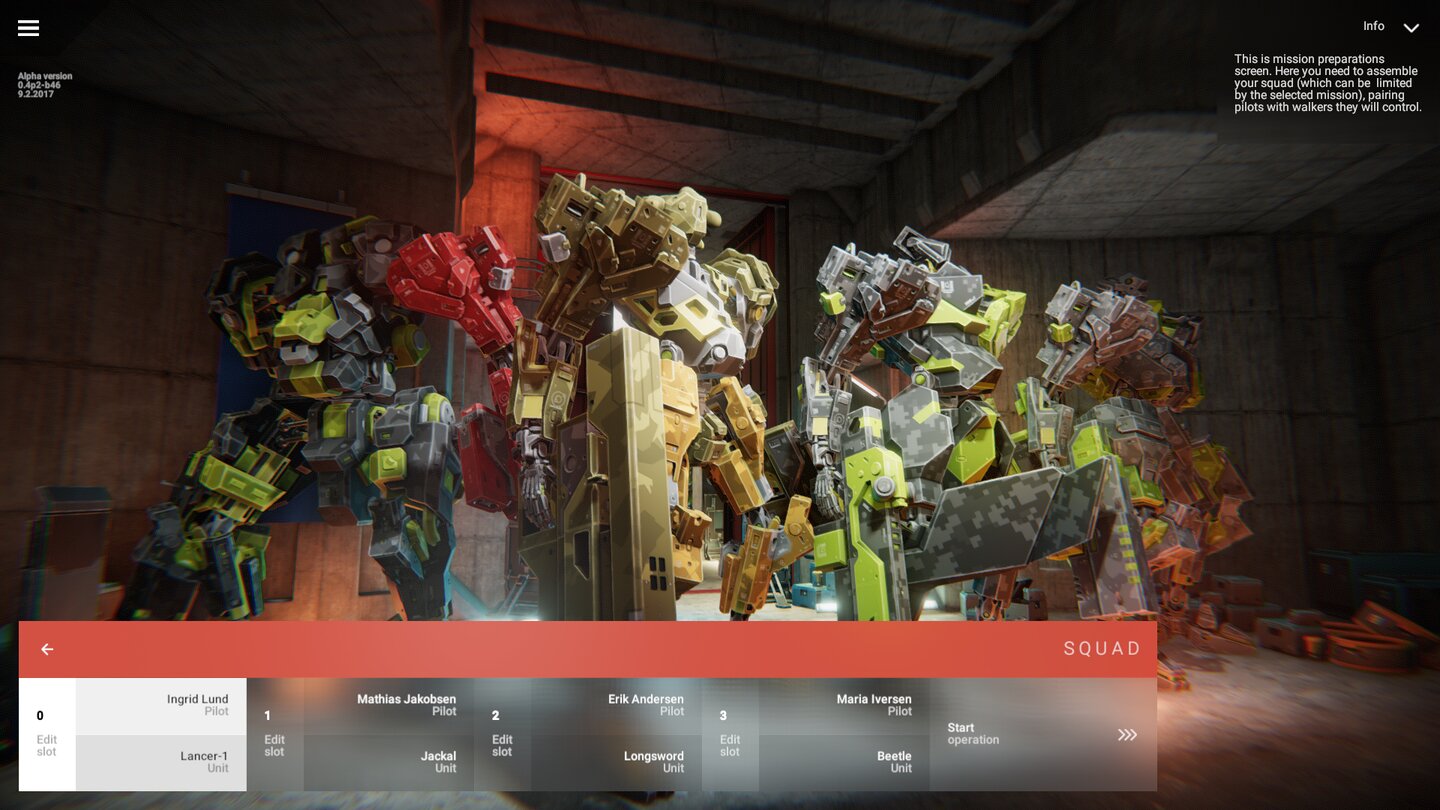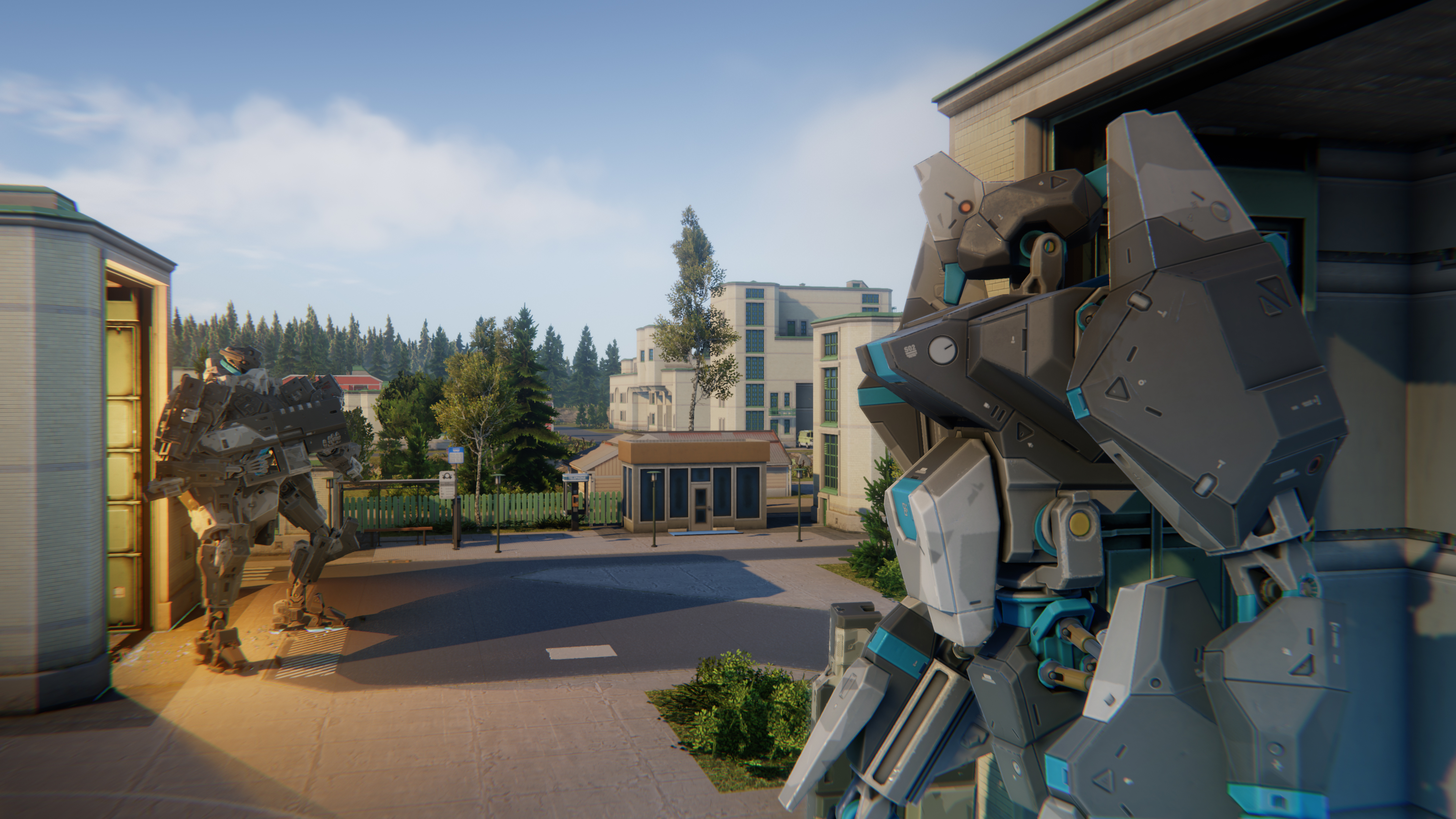

Your mobile armory is equipped with a scanner however and as you close in on unidentified points of interest you begin to collect intel on them. Each new territory you go into, you go in with little to no knowledge of the terrain. The country is split up into territories, and it’s up to your team and mobile armory to travel the country, liberating them. I was shown a little bit of how the overworld works and I found it quite interesting. A leg can be lost by an explosion or even an inconveniently placed sniper’s bullet. You can’t specifically target an enemy’s limbs so it’s all dependent on the weapon you use.

It would be interesting if you could as a way to hinder a pilot’s visibility but alas. You can’t, however, destroy a mech’s head and that feels like a vital part of combat. Losing an arm means losing a weapon and a leg, mobility. This also means you can damage a mech’s arms and legs and taking them out hinders them immensely. To destroy (or knockout) an enemy mech, players need to destroy a mech’s torso. One thing that isn’t in the game and I feel is a missed opportunity, is a more vital part of mech damage. All of the things were confirmed by the representatives that those things are in the game. At the booth, they were playing a trailer of the game, and in that trailer, I saw damaged mechs that were missing limbs, shields reflecting beam weaponry, and most interesting to me, a mech colliding with a tank and falling into a building. What I wish I did see was the physics in action. It went on to destroy a missile launching tank whose missiles froze right above a mech he had armed with a sniper rifle. This unit took friendly fire but was mostly okay. One of his units stepped in front of the unit with the plasma launcher. After he planned out his first five seconds, things immediately didn’t work out. I got to see beam weaponry, plasma launchers, and melee weapons. This was to showcase the wider variety of weapons and just how chaotic engagements could get. However, when those five seconds end, time freezes again, meaning anything happening also freezes in time.Īt the end of the demo, the rep showed me a special save they had made further into the game. If you’re confident enough in your plan, you can execute your plan of attack and watch the chaos unfold. Placing your units and ordering the right commands at spot in time is essential to outwitting your enemies and achieving victory. Choosing to attack an enemy with one of their two weapons will show you their effective range. The bar works like a timeline, displaying the next five seconds. With the exception of the movement command, you’ll need to place their commands on a bar. Selecting a friendly unit will allow you to issue orders to that pilot. So, if you scrub through time and see a unit that’s going to be fired upon, make sure to move. There’s no percentage counter to go by and other things in the environment, like trees and buildings as well as the distance, alter the effectiveness of the weaponry in the game. The cone exists as a way to show you where the bullets may go and there’s no guarantee a shot will land in any one specific area depending on how wide the cone is. Unlike games like X-COM, how an enemy intends to attack is displayed as a red cone. Enemies are displayed by a red hologram that will move around the map.

Phantom Brigade requests that you decide carefully and examine each encounter from every angle. The game will briefly show you what the enemies plan on doing and you’ll want to work around those movements.

While you’re planning out your next turn, time is frozen and from there, you can interact with your team. Those things include visibility, terrain, unexpected consequences, and even physics. While playing the demo, it felt like there is quite a lot that factors into combat situations.


 0 kommentar(er)
0 kommentar(er)
